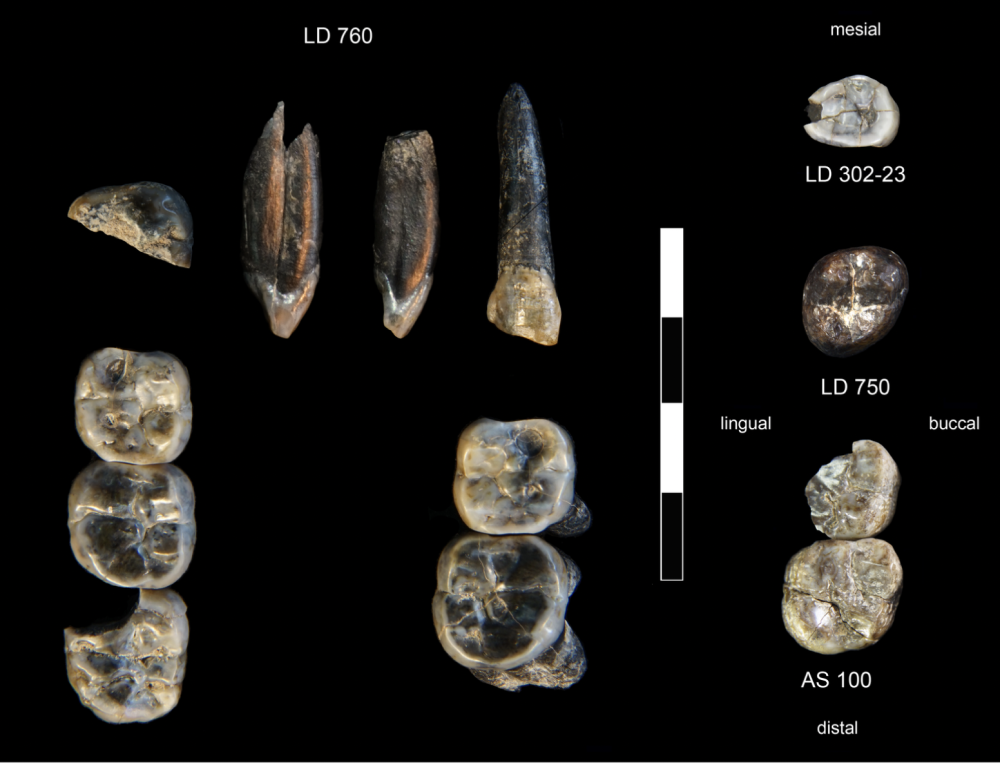Fossilized teeth discovered in Ethiopia have revealed a new-to-science species of Australopithecus, a genus of early hominins that lived from the Pliocene to the Early Pleistocene. Not only does it add to our busy human family tree, but the discovery proves they were living alongside the oldest specimens of Homo, the genus of early humans that includes our species, Homo sapiens.
The rest of this article is behind a paywall. Please sign in or subscribe to access the full content.
The discovery challenges the ape-to-human view of our evolution, demonstrating that our family tree? It’s really more of a shrub.
“This new research shows that the image many of us have in our minds of an ape to a Neanderthal to a modern human is not correct – evolution doesn’t work like that,” said ASU paleoecologist Kaye Reed in a release. “Here we have two hominin species that are together. And human evolution is not linear, it’s a bushy tree, there are life forms that go extinct.”

The 13 fossil teeth collected in the Ledi-Geraru Research Area from 2015-2018. The collections at LD 750 and LD 760 localities represent a newly-discovered species of Australopithecus. LD 302 and AS 100 represent early Homo already known from the LD 350 mandible discovered in 2013.
Image credit: Brian Villmoare: University of Nevada Las Vegas
The discovery was made as part of the Ledi-Geraru Research Project, which is led by scientists at Arizona State University. Already there investigations have turned up the oldest member of the genus Homo at sites in Ethiopia’s Ledi-Geraru region, as well as the earliest Oldowan stone tools on the planet.
It began with the discovery of 13 teeth in sediments that date back between 2.6 to 2.8 million years ago. The scientists could work out their age thanks to past volcanic activity that released ash containing crystals called feldspars, and the positioning of the teeth between these deposits reveals how long ago they went into the ground.
The teeth included samples from the oldest member of the Homo genus, and some from an Australopithecus genus, but not a species we’ve ever found anywhere else. The team concluded that it must be a new species of Australopithecus that’s distinct from the famous “Lucy” species, Australopithecus afarensis, cementing that we’ve yet to find fossils of Lucy’s kind that are younger than 2.95 million years old.
“The new finds of Homo teeth from 2.6–2.8 million year old sediments – reported in this paper – confirms the antiquity of our lineage,” said Brian Villmoare, lead author and ASU alumnus. “We know what the teeth and mandible of the earliest Homo look like, but that’s it. This emphasizes the critical importance of finding additional fossils to understand the differences between Australopithecus and Homo, and potentially how they were able to overlap in the fossil record at the same location.”
As for what this new Australopithecus species is called? Well, we’re going to have to wait a bit. The team say they need further fossils to confirm its unique traits first, but for now, we can rejoice in another hominin joining the rich tapestry of our family tree.
The study is published in the journal Nature.
Source Link: New Species Of Early Human Lived Alongside The Oldest Known Homo Over 2.6 Million Years Ago